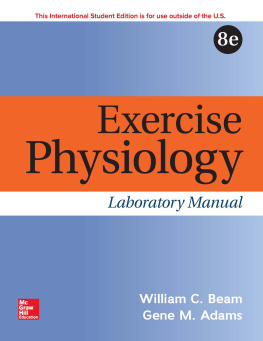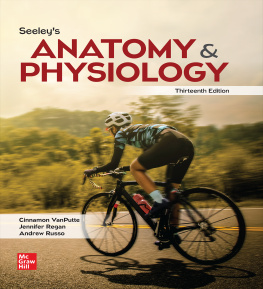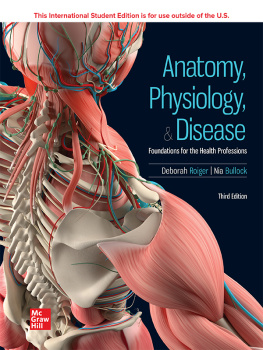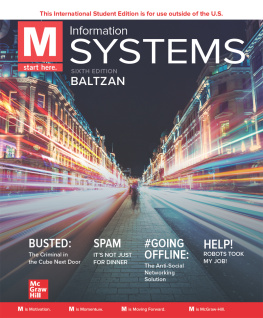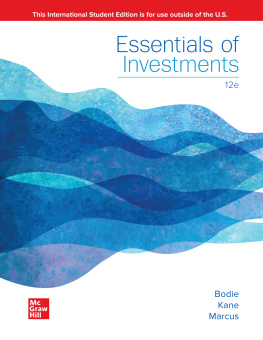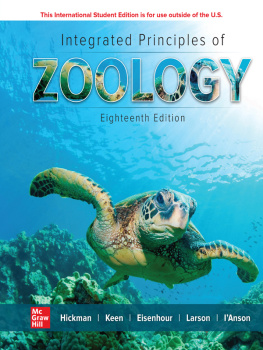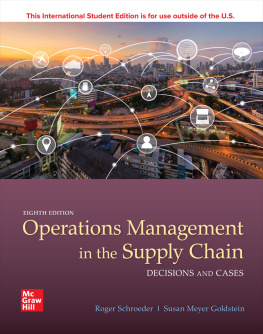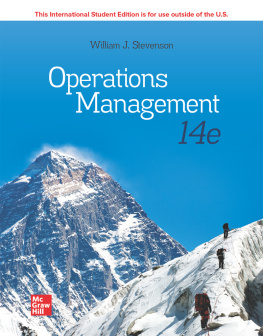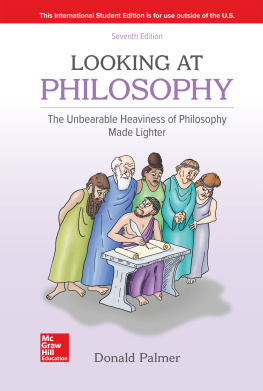Beam William - ISE EBook Online Access for Exercise Physiology Laboratory Manual
Here you can read online Beam William - ISE EBook Online Access for Exercise Physiology Laboratory Manual full text of the book (entire story) in english for free. Download pdf and epub, get meaning, cover and reviews about this ebook. year: 2021, publisher: McGraw-Hill US Higher Ed ISE, genre: Children. Description of the work, (preface) as well as reviews are available. Best literature library LitArk.com created for fans of good reading and offers a wide selection of genres:
Romance novel
Science fiction
Adventure
Detective
Science
History
Home and family
Prose
Art
Politics
Computer
Non-fiction
Religion
Business
Children
Humor
Choose a favorite category and find really read worthwhile books. Enjoy immersion in the world of imagination, feel the emotions of the characters or learn something new for yourself, make an fascinating discovery.
- Book:ISE EBook Online Access for Exercise Physiology Laboratory Manual
- Author:
- Publisher:McGraw-Hill US Higher Ed ISE
- Genre:
- Year:2021
- Rating:4 / 5
- Favourites:Add to favourites
- Your mark:
- 80
- 1
- 2
- 3
- 4
- 5
ISE EBook Online Access for Exercise Physiology Laboratory Manual: summary, description and annotation
We offer to read an annotation, description, summary or preface (depends on what the author of the book "ISE EBook Online Access for Exercise Physiology Laboratory Manual" wrote himself). If you haven't found the necessary information about the book — write in the comments, we will try to find it.
Beam William: author's other books
Who wrote ISE EBook Online Access for Exercise Physiology Laboratory Manual? Find out the surname, the name of the author of the book and a list of all author's works by series.
ISE EBook Online Access for Exercise Physiology Laboratory Manual — read online for free the complete book (whole text) full work
Below is the text of the book, divided by pages. System saving the place of the last page read, allows you to conveniently read the book "ISE EBook Online Access for Exercise Physiology Laboratory Manual" online for free, without having to search again every time where you left off. Put a bookmark, and you can go to the page where you finished reading at any time.
Font size:
Interval:
Bookmark:

Eighth Edition
E XERCISE P HYSIOLOGY
LABORATORY MANUAL
Eighth Edition
LABORATORY MANUAL
William C. Beam
California State University, Fullerton
Gene M. Adams
California State University, Fullerton


EXERCISE PHYSIOLOGY LABORATORY MANUAL
Published by McGraw-Hill Education, 2 Penn Plaza, New York, NY 10121. Copyright 2019 by McGraw-Hill Education. All rights reserved. Printed in the United States of America. No part of this publication may be reproduced or distributed in any form or by any means, or stored in a database or retrieval system, without the prior written consent of McGraw-Hill Education, including, but not limited to, in any network or other electronic storage or transmission, or broadcast for distance learning.
Some ancillaries, including electronic and print components, may not be available to customers outside the United States.
This book is printed on acid-free paper.
1 2 3 4 5 6 7 8 9 QVS 21 20 19 18
ISBN 978-1-260-08555-6
MHID 1-260-08555-4
All credits appearing on page or at the end of the book are considered to be an extension of the copyright page.
The Internet addresses listed in the text were accurate at the time of publication. The inclusion of a website does not indicate an endorsement by the authors or McGraw-Hill Education, and McGraw-Hill Education does not guarantee the accuracy of the information presented at these sites.
mheducation.com/highered
ORIENTATION TO MEASUREMENT
IN EXERCISE PHYSIOLOGY

T he eighth edition of Exercise Physiology Laboratory Manual is a comprehensive source of information for instructors and students interested in practical laboratory experiences related to the field of exercise physiology. The manual provides instruction on the measurement and evaluation of muscular strength, anaerobic fitness, aerobic fitness, cardiovascular function, respiratory function, flexibility, and body composition. Each chapter, written in a research format, provides the rationale underlying the test to be completed, includes detailed methods and up-to-date comparative data, and concludes with a discussion of the results based on published studies. Homework forms at the end of each chapter can be completed in preview of an upcoming lab or in review of a completed lab. Lab Results forms direct students on the collection of laboratory data and the calculation and evaluation of results. Exercise Physiology Laboratory Manual can be used as a stand-alone lab manual for a separate exercise physiology laboratory course. It can also serve, however, as a complement to any exercise physiology textbook to provide direction for laboratory experiences associated with an exercise physiology lecture course. And finally, it is an excellent reference source for a variety of other kinesiology courses, including those involved in measurement and evaluation, strength and conditioning, and exercise testing and prescription. The laboratory and field test experiences in this laboratory manual are designed to reinforce the basic principles learned in the lecture and laboratory course and to teach the fundamental skills of measurement and evaluation in the field of exercise physiology. Although specific equipment is described in the laboratory manual, the methods for each test are written as generically as possible, so that differing equipment and instrumentation can be used to conduct the tests. Much of the equipment used today in an exercise physiology laboratory is highly automated and provides instant results at the touch of a button. Exercise Physiology Laboratory Manual takes a more old school approach, assuming that more learning occurs when students are required to collect the raw data and conduct many of the calculations necessary to derive the final test results.
The eighth edition of Exercise Physiology Laboratory Manual remains faithful to the roots established in the previous seven editions over the last three decades. Readers of the manual will find that many hallmarks of the previous editions remain. Numerous changes have been made to the content in the eighth edition, however, and many up-to-date references have been added.
Features of the seventh edition remaining include:
- Written in a research format, the manual includes the rationale behind each laboratory test, detailed methods, comparative data, and a discussion of the results based on published studies.
- Accepted terminology and units of measure are used consistently throughout the manual.
- Homework forms are written to emphasize the content of the chapter. They can be completed prior to the lab as a preview of material or can be done following the lab as a review of material.
- Laboratory Results forms are written to provide direction in the measurement and evaluation of laboratory data.
- Accuracy Boxes appear throughout the manual for those who want to examine the reliability, validity, and objectivity of the tests performed.
- Calibration Boxes appear throughout the manual for those who want to go into further depth with the instruments.
- Chapter Preview/Review boxes in each chapter include questions to be answered by students either in preview of an upcoming lab or in review of a completed lab emphasize the chapter content and place more responsibility for learning on the students.
Significant changes made to the eighth edition include the following:
- Text changes made throughout the manual intended to make the manual more readable and understandable to students.
- Revised and new text in introduction, methods, and discussion sections throughout the manual to better describe the rationale of the tests, methodology of data collection, and significance of the results. Specific changes include new introductory material in .
- Updated and newly added references to original research studies and other sources of information throughout the manual, especially in .
- Updated data in numerous chapters, especially height and weight data in .
- Changes to numerous tables throughout the manual to make them more user-friendly, especially tables in .
- Revisions, some small and some larger, to every Homework and Lab Results form throughout the entire lab manual.
- Other specific changes include the addition of height and weight data for Asian Americans in .
The material contained in Exercise Physiology Laboratory Manual is divided into eight parts, each of which describes a different type of physiological test or response. Part I, Orientation to Measurement in Exercise Physiology, includes chapters that introduce topics, terminology, variables (e.g., force, work, power), and units of measure (e.g., N, Nm, W) and describe the collection of basic data. Part II, Muscular Strength, includes chapters on the measurement of isotonic, isometric, and isokinetic strength. Emphasis is placed on testing and describing strength in both absolute and relative terms. Part III, Anaerobic Fitness, includes chapters on sprinting, jumping, and anaerobic cycling, stepping, and treadmill running. Numerous modes of testing are described so that the instructor or student can choose the most appropriate test to use based on the specific sport or activity of interest. Before administering any of these tests that require a high degree of physical effort, instructors should consider the health history of the participants (students). Participants (students) completing these tests should be free of disease (i.e., cardiovascular, pulmonary, metabolic); should have no signs or symptoms suggestive of disease (e.g., angina, shortness of breath, irregular heartbeat, dizziness, etc.); and should have few major risk factors for cardiovascular disease (i.e., cigarette smoking, hypertension, hyperlipidemia, diabetes, physical inactivity, obesity, and family history of disease). include material that can be used to assess exercise risk.
Next pageFont size:
Interval:
Bookmark:
Similar books «ISE EBook Online Access for Exercise Physiology Laboratory Manual»
Look at similar books to ISE EBook Online Access for Exercise Physiology Laboratory Manual. We have selected literature similar in name and meaning in the hope of providing readers with more options to find new, interesting, not yet read works.
Discussion, reviews of the book ISE EBook Online Access for Exercise Physiology Laboratory Manual and just readers' own opinions. Leave your comments, write what you think about the work, its meaning or the main characters. Specify what exactly you liked and what you didn't like, and why you think so.

